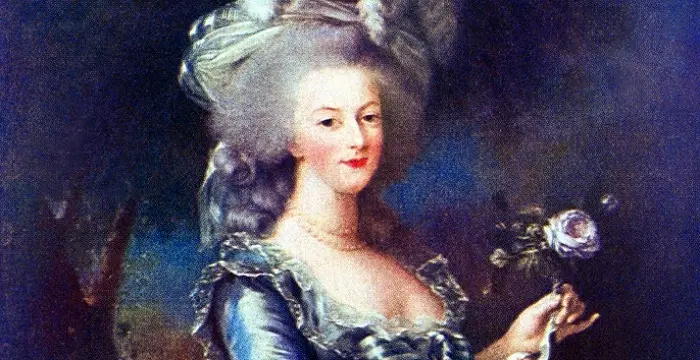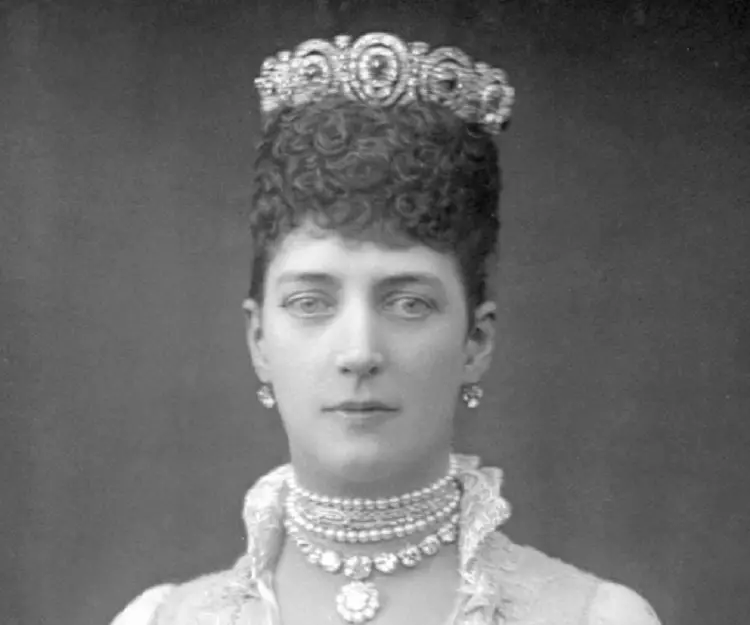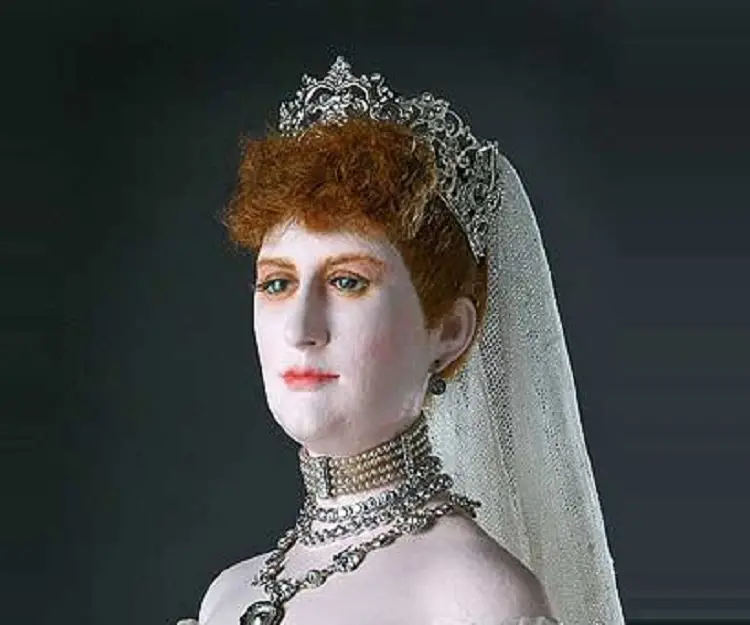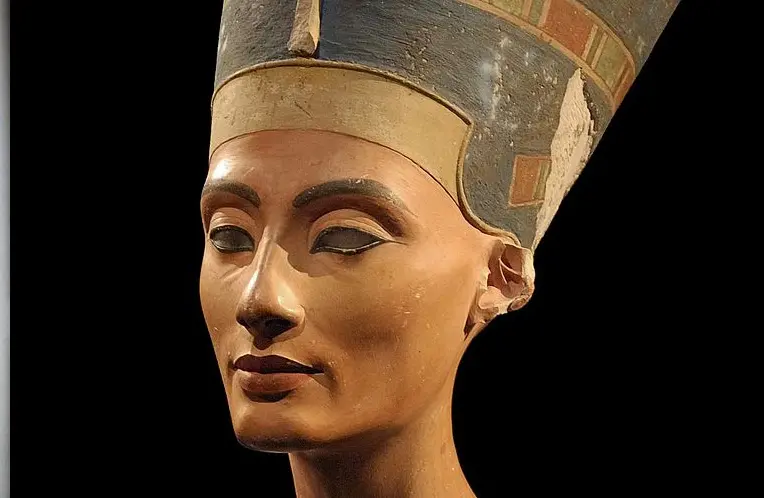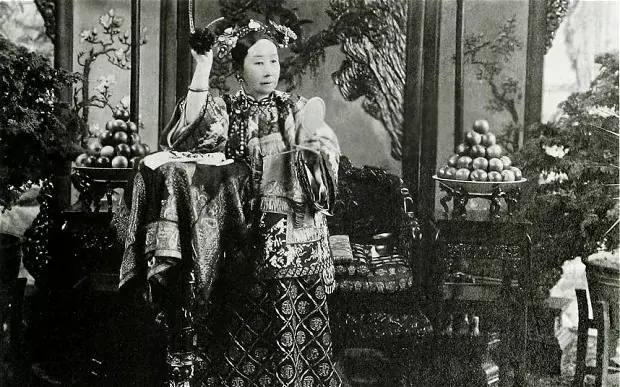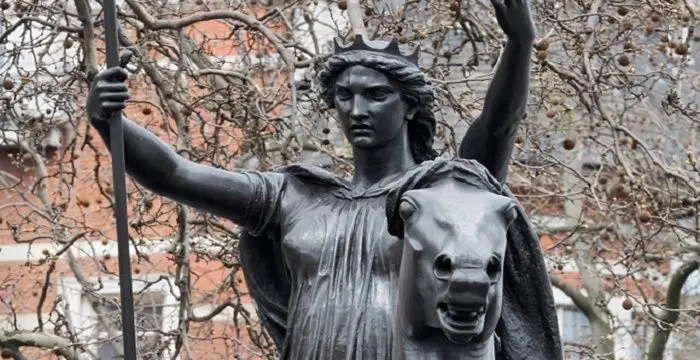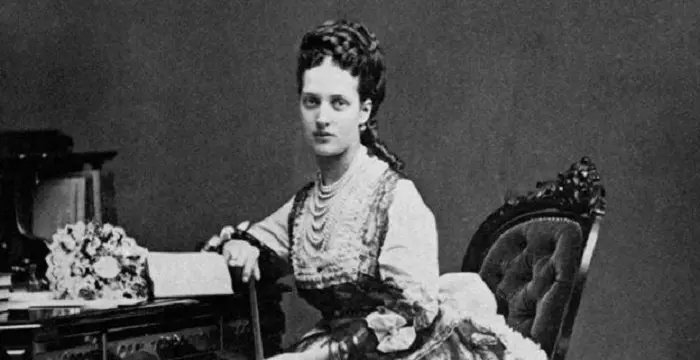
Alexandra of Denmark - Empresses, Birthday and Personal Life
Alexandra of Denmark's Personal Details
Alexandra of Denmark was Queen of the United Kingdom of Great Britain and Ireland and Empress of India
| Information | Detail |
|---|---|
| Birthday | December 1, 1844 |
| Died on | November 20, 1925 |
| Nationality | British |
| Famous | Historical Personalities, Empresses & Queens, Empresses, Queen of Great Britain (1901-1910), Queens |
| Siblings | Frederick VIII of Denmark, George I of Greece, Maria Feodorovna, Prince Valdemar of Denmark, Princess Thyra of Denmark |
| Childrens | Duke of Clarence and Avondale, George V, Louise, Maud of Wales, Prince Albert Victor, Prince Alexander John of Wales, Princess Royal, Princess Victoria of the United Kingdom |
| Birth Place | Yellow Mansion, Copenhagen, Denmark |
| Gender | Female |
| Sun Sign | Sagittarius |
| Born in | Yellow Mansion, Copenhagen, Denmark |
| Famous as | Queen of Great Britain (1901-1910) |
| Died at Age | 80 |
// Famous Queens
Jetsun Pema
Jetsun Pema is the Queen consort of Bhutan. Check out this biography to know about her childhood, family life, achievements and fun facts about her life.
Princess Alice of Battenberg
Princess Andrew of Greece and Denmark, also known as Princess Victoria Alice Elizabeth Julia Marie of Battenberg, was the mother of Prince Philip, Duke of Edinburgh and mother-in-law of Queen Elizabeth II. This biography profiles her childhood, famil
Marie Antoinette
Marie Antoinette was the Queen of France and Navarre from 1774 to 1792. who played a major role in provoking the French Revolution. This biography of Marie Antoinette provides detailed information about her childhood and life
Alexandra of Denmark's photo
Who is Alexandra of Denmark?
Alexandra of Denmark was Queen of the United Kingdom of Great Britain and Ireland and Empress of India. She was married to King Edward VII, King of the United Kingdom and the British Dominions and Emperor of India. She was the reigning princess of Wales for almost 38 years, which made her the longest reigning Princess and when her husband Edward became the King in 1901, she gained the position as queen-empress until her husband died in 1910 and after that, she became the queen mother to King George V when he became the king after his father’s death. She remained away from the workings of the court and the associated politics and mostly handled the charitable deeds of the royal crown but somehow, she was also known for hostility towards the Germans. She remained an icon until her very last years and died from a heart attack in November 1925.
// Famous Empresses
Jetsun Pema
Jetsun Pema is the Queen consort of Bhutan. Check out this biography to know about her childhood, family life, achievements and fun facts about her life.
Princess Alice of Battenberg
Princess Andrew of Greece and Denmark, also known as Princess Victoria Alice Elizabeth Julia Marie of Battenberg, was the mother of Prince Philip, Duke of Edinburgh and mother-in-law of Queen Elizabeth II. This biography profiles her childhood, famil
Marie Antoinette
Marie Antoinette was the Queen of France and Navarre from 1774 to 1792. who played a major role in provoking the French Revolution. This biography of Marie Antoinette provides detailed information about her childhood and life
Childhood & Early Life
Born Princess Alexandra Caroline Marie Charlotte Louise Julia at Yellow House, Copenhagen, Denmark on 1st December 1844, she was one of the six children of the Danish royal Prince Christian of Schleswig-Holstein-Sonderburg-Glucksberg and his wife, Louise of Hesse-Kassel. The family lived a very simple life royal background and mostly survived on the army salary the father received, which was just enough to make them go through with their daily chores. She was born amidst the struggle for Danish throne and her father was much behind in the line of succession, but he wasn’t too curious to sit on the throne himself.
Somehow, fate became kinder on Alexandra’s family and her father got the title of Prince Christian of Denmark and the family moved to a new residence, which reeked of royalty, the Bernstorff Palace in the national capital of Copenhagen. But somehow, family’s income didn’t grow due to her father’s stubbornness of not setting things right with the monarchy. Alexandra shared a bedroom in the huge palace with her closest sibling, her sister Dagmar, who would later grow up to become the empress of Soviet Russia.
Alexandra was a fast learner and as she was in her early teens, she started prepping up to get married in a royal family soon and hence, her training began in embroidery, academics, manners among other things required of the princesses and queens. She showed a keen interest in sports as well and learned swimming quickly.
As Alexandra grew into a young woman, she was called the most beautiful woman in the whole empire.
She learned English and was a very religious young girl who was highly devoted to the High Church practices. In a way, she had become an ideal woman to grace a royal household with her presence and rightly so, when she turned 16, she was betrothed to Albert Edward, the Prince of Wales.
Marriage & Reign as the Princess of Wales
Prince Albert and Queen Victoria of Great Britain were looking for a suitable bride for their heir and oldest son, Albert Edward, and even though Alexandra was never their first choice, she was being considered for the marriage. Her family had strong relations with Germans, so it was almost confirmed that the Prince would have a German wife, but nothing right was happening in that direction, and the Royal British family finalised Alexandra as their daughter-in-law.
In 1862, Edward officially proposed Alexandra during a meeting at the Royal Castle of Laeken and a few months later, Alexandra set out to visit Britain for the first time in her life and her arrival was welcomed with a lavish feast.
On 10th March 1863, the couple took vows in the Windsor Castle and Alexandra started her term as the Princess of Wales. This royal wedlock brought good luck to her very own family back in Denmark as her father was officially named the King of Denmark by the end of the year, but not without his share of disputes.
Britain helped Denmark in the war against Germans, who had captured two-fifth of Denmark’s area. In early 1864, Alexandra gave birth to her first son named Albert Victor and she would eventually go on to give birth to five more of Edward VII’s children. However, all the children were born prematurely, the birth of her third child, exposed Alexandra to a high fever and her life was threatened as a result. Fortunately, she was cured of it, but the disease left a permanent limp, from which she suffered her remaining life.
Alexandra and her husband Edward embarked on a tour of Ireland the very next year, and by then, she was already pregnant with her fourth child and was physically very weak due to the complications in the previous childbirth. She grew weaker and back-to-back pregnancies had a very bad impact on her overall health and her final and sixth child died of premature birth, which led to extreme sadness in the royal family.
Alexandra was a good mother and took good care of all of her children equally. People praised her, along with the royal courtesans of the British court. It was said that she had everything a princess must have in terms of character and dignity when she was a public figure and in her private life, she was a kind, loving wife and mother. She accompanied her husband on his trips to Greece, Egypt and eventually, she earned the honour of being the only woman who shared the dinner table with the Ottoman king.
However, all seemed glitzy from outside, but her private life was quite troublesome. Her husband kept an array of mistresses and after she started walking with a limp, he even started ignoring her on many of his international trips. But Alexandra never complained and rather than exposing her husband, she remained quiet, keeping the integrity of the royal crown intact. Her oldest son, Albert Victor, passed away in 1891, which was another serious blow to her.
In 1901, Queen Victoria passed away, making way for Alexandra’s husband Edward’s coronation and he became the King as Edward VII. Although she was now a queen, her life remained more or less the same but eventually, she started giving her advices on many political matters, but most of it was due to her favouring Denmark, her birthplace and her hatred for the Germans, who invaded Denmark. Somehow, her interferences were one of the reasons why she was kept away from most of the foreign tours.
When king Edward VII fell ill in the early 1910, she cared for him day and night, but despite all that, he passed away in May 1910 and even though she was treated badly by her husband almost all her life, it was apparent that she was extremely sad following his demise. Coronation of her son, King George V, followed and just a few years later, the First World War broke out in all its force. Her hatred towards Germany, which was first ignored as personal vendetta, was now pretty much justified as Germany turned out to be a British enemy and just as the war was over, Alexandra had become very weak both physically and mentally.
Death & Legacy
In the last few weeks of her life, Alexandra of Denmark suffered from breathing issues, speech impairment and a failing memory. On 20th November 1925, she dragged her last breathe and was subsequently buried in a chapel beside her husband King Edward VII’s grave at Windsor Castle.
Only after she was gone and her life story became open to the general public, they begun to realise how great and ideal queen she had been. She was involved in charities, and remained mum about it, although being a public figure, it was difficult for her to remain anonymous with all her charitable deeds. Many parks and halls were renamed after her.
She will always remain a queen consort who was in all the possible contexts, a perfect queen regent, but she led a very imperfect life and the duties she performed with utter earnestness were never appreciated while she was alive. It gives one more glimpse into how the life can still be unfair for even the most privileged ones of us.
Alexandra of Denmark biography timelines
- // 1st Dec 1844Born Princess Alexandra Caroline Marie Charlotte Louise Julia at Yellow House, Copenhagen, Denmark on 1st December 1844, she was one of the six children of the Danish royal Prince Christian of Schleswig-Holstein-Sonderburg-Glucksberg and his wife, Louise of Hesse-Kassel. The family lived a very simple life royal background and mostly survived on the army salary the father received, which was just enough to make them go through with their daily chores. She was born amidst the struggle for Danish throne and her father was much behind in the line of succession, but he wasn’t too curious to sit on the throne himself.
- // 1862In 1862, Edward officially proposed Alexandra during a meeting at the Royal Castle of Laeken and a few months later, Alexandra set out to visit Britain for the first time in her life and her arrival was welcomed with a lavish feast.
- // 1863On 10th March 1863, the couple took vows in the Windsor Castle and Alexandra started her term as the Princess of Wales. This royal wedlock brought good luck to her very own family back in Denmark as her father was officially named the King of Denmark by the end of the year, but not without his share of disputes.
- // 1901In 1901, Queen Victoria passed away, making way for Alexandra’s husband Edward’s coronation and he became the King as Edward VII. Although she was now a queen, her life remained more or less the same but eventually, she started giving her advices on many political matters, but most of it was due to her favouring Denmark, her birthplace and her hatred for the Germans, who invaded Denmark. Somehow, her interferences were one of the reasons why she was kept away from most of the foreign tours.
- // 1910When king Edward VII fell ill in the early 1910, she cared for him day and night, but despite all that, he passed away in May 1910 and even though she was treated badly by her husband almost all her life, it was apparent that she was extremely sad following his demise. Coronation of her son, King George V, followed and just a few years later, the First World War broke out in all its force. Her hatred towards Germany, which was first ignored as personal vendetta, was now pretty much justified as Germany turned out to be a British enemy and just as the war was over, Alexandra had become very weak both physically and mentally.
- // 20th Nov 1925In the last few weeks of her life, Alexandra of Denmark suffered from breathing issues, speech impairment and a failing memory. On 20th November 1925, she dragged her last breathe and was subsequently buried in a chapel beside her husband King Edward VII’s grave at Windsor Castle.
// Famous Empresses & Queens
Jetsun Pema
Jetsun Pema is the Queen consort of Bhutan. Check out this biography to know about her childhood, family life, achievements and fun facts about her life.
Princess Alice of Battenberg
Princess Andrew of Greece and Denmark, also known as Princess Victoria Alice Elizabeth Julia Marie of Battenberg, was the mother of Prince Philip, Duke of Edinburgh and mother-in-law of Queen Elizabeth II. This biography profiles her childhood, famil
Marie Antoinette
Marie Antoinette was the Queen of France and Navarre from 1774 to 1792. who played a major role in provoking the French Revolution. This biography of Marie Antoinette provides detailed information about her childhood and life
Nefertiti
Neferneferuaten Nefertiti was an Egyptian queen and chief consort of Akhenaten, an Egyptian Pharaoh. This biography profiles her childhood, family, life as queen, accomplishments, death, and other facts.
Empress Dowager Cixi
Empress Dowager Cixi was a Chinese empress dowager and regent of the Qing Dynasty. This biography profiles her childhood, rise to power, rule, administration and other interesting facts.
Boudica
Boudica was a queen of the Celtic Icenic tribe, who led an uprising against Roman invaders. Check out this biography to know about her childhood, family, achievements, etc.
Alexandra of Denmark's FAQ
What is Alexandra of Denmark birthday?
Alexandra of Denmark was born at 1844-12-01
When was Alexandra of Denmark died?
Alexandra of Denmark was died at 1925-11-20
Which age was Alexandra of Denmark died?
Alexandra of Denmark was died at age 80
Where is Alexandra of Denmark's birth place?
Alexandra of Denmark was born in Yellow Mansion, Copenhagen, Denmark
What is Alexandra of Denmark nationalities?
Alexandra of Denmark's nationalities is British
Who is Alexandra of Denmark siblings?
Alexandra of Denmark's siblings is Frederick VIII of Denmark, George I of Greece, Maria Feodorovna, Prince Valdemar of Denmark, Princess Thyra of Denmark
Who is Alexandra of Denmark childrens?
Alexandra of Denmark's childrens is Duke of Clarence and Avondale, George V, Louise, Maud of Wales, Prince Albert Victor, Prince Alexander John of Wales, Princess Royal, Princess Victoria of the United Kingdom
What is Alexandra of Denmark's sun sign?
Alexandra of Denmark is Sagittarius
How famous is Alexandra of Denmark?
Alexandra of Denmark is famouse as Queen of Great Britain (1901-1910)


